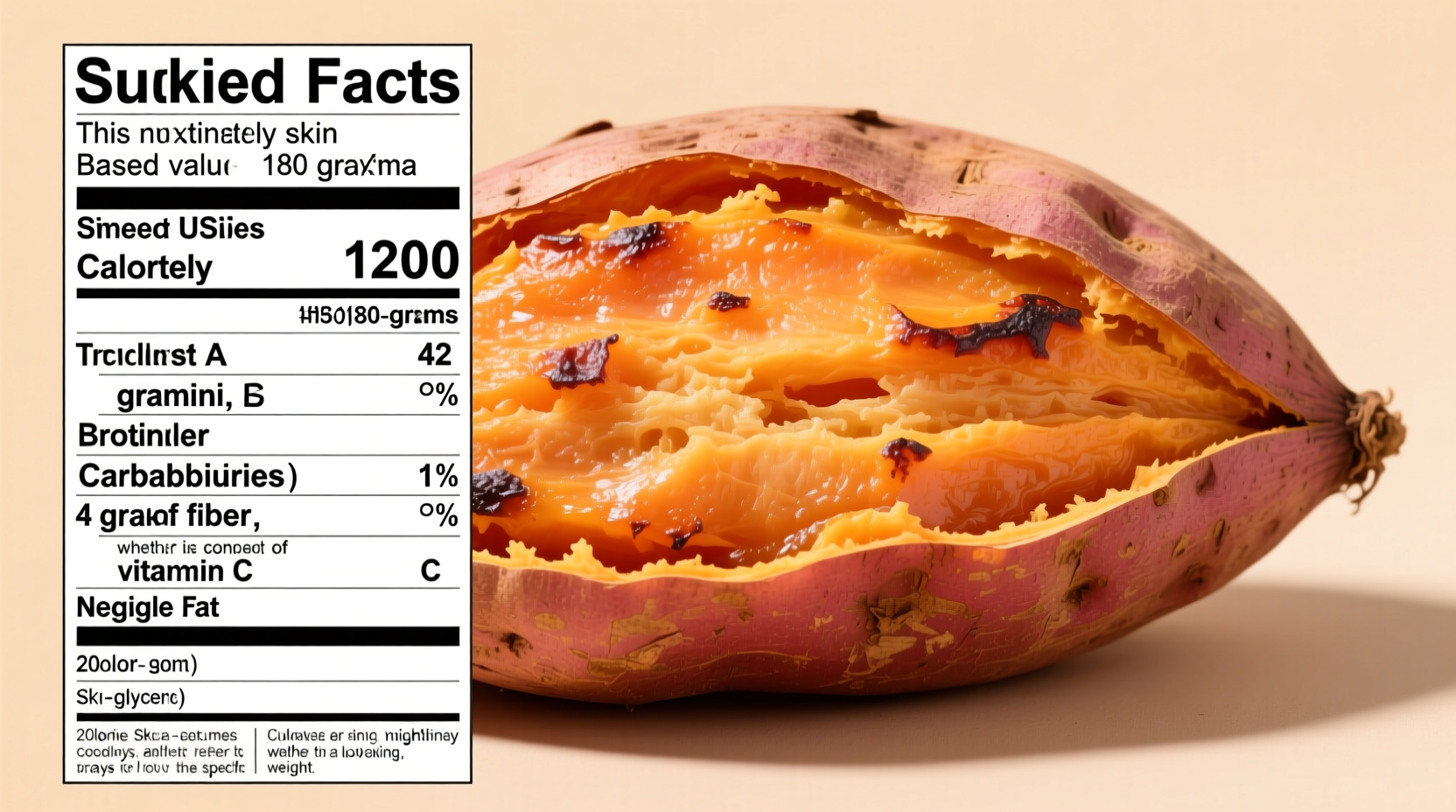When tracking your daily calorie intake, knowing the exact nutritional content of common foods is essential. Whether you're meal prepping, following a specific diet plan, or simply curious about your favorite foods, understanding the calorie count of a large sweet potato helps you make informed dietary choices without sacrificing flavor or nutrition.
What Exactly Qualifies as a "Large" Sweet Potato?
The term "large" can be confusing when it comes to produce. In nutritional databases like the USDA's FoodData Central, a large sweet potato is standardized at 180 grams (about 6.3 ounces) of raw, peeled weight. This measurement provides consistency for nutritional calculations.
Here's how to identify a large sweet potato in the grocery store or your kitchen:
- Approximately 5-6 inches in length
- Diameter of about 2-2.5 inches at its widest point
- Weight between 170-190 grams when peeled
Understanding these measurements prevents confusion when following recipes or tracking your nutrition. Many people overestimate or underestimate portion sizes, which can significantly impact calorie counting accuracy.
| Sweet Potato Size | Weight (grams) | Calories | Carbohydrates |
|---|---|---|---|
| Small (4" long) | 130g | 118 | 27g |
| Medium (5" long) | 150g | 135 | 31g |
| Large (6" long) | 180g | 162 | 37g |
| Extra Large (7"+ long) | 200g | 180 | 41g |
Complete Nutritional Profile of a Large Sweet Potato
Beyond calories, a large sweet potato delivers impressive nutritional benefits. According to the USDA National Nutrient Database, here's the complete breakdown:
- Total Fat: 0.3g (negligible)
- Carbohydrates: 37g
- Dietary Fiber: 4g (16% of daily value)
- Sugars: 6g (naturally occurring)
- Protein: 2g
- Vitamin A: 28,058 IU (561% of daily value)
- Vitamin C: 33mg (55% of daily value)
- Potassium: 709mg (20% of daily value)
- Manganese: 0.7mg (32% of daily value)
This exceptional nutrient density explains why sweet potatoes consistently rank among the top recommended vegetables by nutrition professionals. The high vitamin A content (in the form of beta-carotene) supports eye health and immune function, while the fiber content promotes digestive health and helps maintain stable blood sugar levels.

How Cooking Methods Impact Calorie Content
While the raw calorie count remains consistent, your preparation method affects the final nutritional profile. Understanding these differences helps you make choices aligned with your dietary goals:
- Boiled: 162 calories (minimal change from raw)
- Baked: 180 calories (slight concentration as water evaporates)
- Microwaved: 165 calories (quick cooking preserves most nutrients)
- Air Fried: 170 calories (slight increase from surface concentration)
- With added oil: Varies significantly (1 tablespoon oil adds 120 calories)
Research published in the Journal of Agricultural and Food Chemistry confirms that boiling preserves more antioxidants than baking, while baking increases the bioavailability of beta-carotene. Your cooking method should align with your specific nutritional priorities.
Sweet Potatoes vs. Regular Potatoes: A Nutritional Comparison
Many people wonder how sweet potatoes compare to regular white potatoes. While both are nutritious, there are significant differences:
| Nutrient | Large Sweet Potato (180g) | Large White Potato (173g) |
|---|---|---|
| Calories | 162 | 163 |
| Carbohydrates | 37g | 37g |
| Dietary Fiber | 4g | 3g |
| Vitamin A | 561% DV | 0% DV |
| Vitamin C | 55% DV | 38% DV |
| Potassium | 20% DV | 26% DV |
| Glycemic Index | 63 (medium) | 78 (high) |
This comparison shows why sweet potatoes often receive more favorable recommendations from nutrition professionals. The significantly higher vitamin A content and lower glycemic index make them a better choice for blood sugar management, while providing similar energy content.
Practical Applications for Your Diet
Knowing the calorie content is just the beginning. Here's how to incorporate large sweet potatoes into various dietary approaches:
- Weight Management: One large sweet potato makes a satisfying, nutrient-dense meal component that provides sustained energy without excessive calories
- Active Lifestyles: The complex carbohydrates provide excellent fuel for workouts and recovery
- Diabetes Management: Pair with protein and healthy fats to moderate blood sugar response (the moderate glycemic index becomes low when combined properly)
- Meal Prep: Cook multiple sweet potatoes at once for ready-to-eat components throughout the week
Dietitians often recommend consuming sweet potatoes with a small amount of healthy fat (like olive oil or avocado) to enhance the absorption of fat-soluble vitamins, particularly the abundant beta-carotene.
Evidence-Based Health Benefits
Research supports several health benefits associated with regular sweet potato consumption:
- A 2020 review in Nutrients highlighted sweet potatoes' role in supporting immune function due to their exceptional vitamin A content
- Studies show the antioxidants in sweet potatoes may help reduce inflammation markers in the body
- The high fiber content contributes to gut health and may support a diverse microbiome
- Research in the American Journal of Clinical Nutrition suggests orange-fleshed sweet potatoes can significantly improve vitamin A status in populations with deficiencies
These benefits make sweet potatoes more than just a source of calories—they're a functional food that contributes to overall health when incorporated as part of a balanced diet.
Common Questions About Sweet Potato Nutrition
Understanding the calorie content of sweet potatoes often leads to additional questions about their nutritional properties and best uses in your diet.











 浙公网安备
33010002000092号
浙公网安备
33010002000092号 浙B2-20120091-4
浙B2-20120091-4